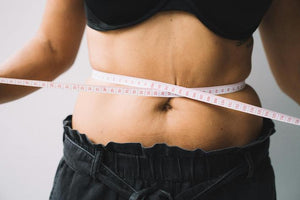Muesli bars, protein shakes, or vegan milk alternatives. There are many foods that appear healthy but actually contain a lot of sugar or unhealthy fats. Eating these foods can make you feel tired, hungry, or unfocused, as they cause your blood sugar levels to quickly rise and fall. We've taken a closer look at some foods and compiled tips on how to make your food and snacks healthier and replace them with healthy alternatives. This way, you'll know what to choose to feel energized and focused throughout the day. But before we get started, let's first define what "healthy" means to us.
What are healthy foods?
A healthy diet is one that meets energy and physiological needs without excessive calorie intake. In other words, a healthy diet is rich in health-promoting foods, such as fresh fruits and vegetables, which are rich in antioxidants and important micronutrients.
Typical healthy foods:
- Have a low proportion of saturated fats
- Contains no added sugar
- Are unprocessed or only minimally processed.
Healthy foods and snacks are considered nutrient-dense and beneficial for your overall health. Keep in mind that foods based on simple and refined carbohydrates aren't necessarily the healthiest option, as these carbohydrates are broken down into glucose more easily and quickly, leading to a sharper glucose spike .

What is a healthy and balanced diet?
A healthy, balanced diet consists of consuming macronutrients , i.e. proteins, fats and carbohydrates , in appropriate, not excessive proportions to meet the body's energy and physiological needs, while providing adequate micronutrients and fluids .
Still not sure what this means? Let's try to explain it in more detail.
Macronutrients are the nutritional values you see on the label on the back of a food package in the supermarket: proteins, carbohydrates and fats .
For a meal to be healthy and balanced, it must contain all three of these macronutrients. These provide the body with the energy it needs for important cellular functions, such as muscle repair.
Micronutrients include vitamins and minerals that you can absorb through food. Your body needs relatively small amounts of them, yet they are essential for growth, development, metabolism, and physiological functions. The more varied—in other words, colorful—your diet is, the easier it is to get all the important nutrients on your plate.
Hydration is the amount of water in your body that's essential for its proper functioning. Make sure you drink about 1.5 to 2 liters of water per day. You can also hydrate your body healthily with herbal teas. Avoid things like coffee, alcohol, or sugary drinks, as these don't hydrate the body as well and can sometimes even have the opposite effect. Fruit juices are also not the best way to quench your thirst. Juices look very healthy, but unfortunately, they cause blood sugar levels to spike.
How to recognize healthy foods:
Healthy foods are usually characterized by these 3 main characteristics mentioned above:
- They are unprocessed or only minimally processed.
- They have a low content of saturated fats
- They contain no added sugar
In general, foods are healthy when they are rich in nutrients and beneficial to our health. However, sometimes foods rich in vitamins and minerals are also high in carbohydrates and fats, which isn't ideal.
But there is also some good news: Some high-fat foods may actually contain monounsaturated or polyunsaturated fats, which are known to be good for our health as long as they are consumed in moderation.
Avocados, for example, are a nutritional powerhouse, containing plenty of vitamins E and K, folic acid, potassium, and B vitamins. The fat in avocados is monounsaturated, which can lower "bad" LDL cholesterol and raise "good" HDL cholesterol, which reduces the risk of heart disease.
However, avocados are high in calories, meaning eating too many can lead to weight gain. One avocado contains 32g of fat, which is equivalent to 400 calories.
Healthy tricks for unhealthy foods
You've probably heard some myths about "healthy" foods that actually turn out to be bad for your health. But don't worry, you don't have to eliminate them completely from your diet. We've taken a closer look at five of these supposedly "healthy" snacks and give you tips on how to actually make them healthier or find an alternative.
1. Smoothies
Smoothies have gained a certain cult following in recent years due to their delicious taste, but also due to their rather misleading promises regarding health and nutritional value. Blending fruit removes its fiber. Reducing fiber in whole fruit accelerates the rate at which the simple sugars contained in fruit juice enter the bloodstream, causing a blood sugar spike.
Make it healthier
- Use a "juicer" blender instead of a regular blender, which homogenizes whole fruits to create "smoothies" without removing fiber.
- Choose green smoothies based on kale or spinach. These contain plenty of vitamins and minerals, but are low in simple sugars like glucose. Add some lime juice and mint for extra flavor.
- Add some berries . They're rich in fiber, vitamins, minerals, and antioxidants. Berries are also known to limit blood sugar response.
- Avoid sugar, syrup, agave nectar or honey.
Add some fat and protein to your smoothie to slow the digestion and absorption of glucose and other simple sugars into your blood. Milk, coconut, almonds, peanuts, plain peanut butter, and walnuts are good choices.
2. Energy bars
Energy bars seem like an easy, convenient, and even healthy way to get an energy boost throughout the day, but in reality, they're a bit of a calorie bomb. Many also contain hidden added sugars and artificial sweeteners like xylitol and mannitol. People who don't lead extremely active lifestyles, such as professional athletes, generally don't need such a high calorie intake throughout the day and risk weight gain by consuming energy bars.
Make it healthier
- Make your own energy bars with ingredients like nuts, fruit , and whole grains .
- Add some flaxseed, whole grains and legumes to increase the nutritional value.
- Be sparing with the dried fruits and/or nuts.
- Do n't eat them regularly
3. Plant-based drinks
Plant-based drinks (known as plant milks outside the European Union) can be lower in calories than full-fat cow's milk, but not necessarily lower in calories than skimmed or semi-skimmed milk. However, many plant-based milks have sugar added to enhance their flavor and make them more dairy-like. Plant-based milks are also often low in fiber, as much of the fiber is lost during processing to create the final product. Most plant-based milks are lower in saturated fat and higher in unsaturated fat, but only if they are not coconut-based. In terms of nutritional value, plant-based milks are often completely lacking in vitamins A, D, and B12, although many undergo complex processing to fortify and artificially supplement them.
Make it healthier
Of all the plant-based alternatives to cow's milk, soy milk is the best option. It generally contains higher amounts of the essential amino acid lysine than other grain-based alternatives such as oat or rice milk, although it may contain lower amounts of the essential amino acids cysteine and methionine.

4. Muesli
Muesli is another breakfast option that looks healthy at first glance, but is actually full of unnecessary and unwanted added sugars and often unhealthy simple carbohydrates.
Make it healthier
Don't buy commercial granola. Making your own is easy, healthy, and fun. This way, you avoid excessive added sugar, use whole grains, and mix it with a moderate amount of raisins, seeds, and nuts.
5. Protein shakes
Protein shakes may seem like the average gym fanatic's best friend, but they're actually unnecessary for anyone who trains less than five hours a week. In addition to their protein content, these shakes often contain added sugar, artificial thickeners, and flavorings. Even more worrying, a report has shown that many commercially available protein shakes contain dangerously high levels of toxins such as heavy metals (lead, arsenic, cadmium, and mercury), bisphenol-A or BPA (used to make plastics), pesticides, and other contaminants linked to cancer and tumor growth.
Make it healthier
Read, reread, and read the label a third time to make sure you know exactly what's in your protein shake before you drink it. And if you exercise no more than 5 hours a week and already eat a healthy, nutritious, and balanced diet, chances are you're already getting enough protein and don't need any supplements at all.
The essence
It's difficult to navigate food choices. Just remember that you should eat a balanced diet, including macronutrients and micronutrients. When choosing foods, make sure they are unprocessed and have no added sugar. Our tip: Always check the label and make sure you know what you're eating. Some things look healthier than they actually are.
If you would like to learn more about how small changes in your diet or lifestyle can positively influence your blood sugar levels and thus your overall health and well-being, then start your journey with Hello Inside today.





